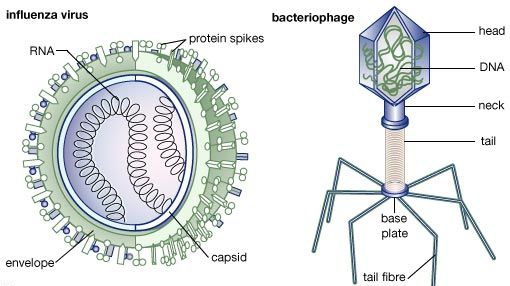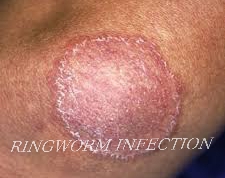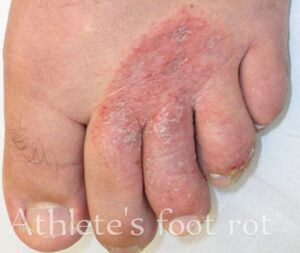Essay Questions on Diseases and infections, integrated science for senior high school.

Essay Questions on Diseases and infections
What is disease?
The disease is a disorder that interacts with the normal and proper functioning of the body of a living thing negatively.
The disease affects the health of an individual in an unpleasant manner bringing discomfort and unrest.
PATHOGENIC DISEASES.
Pathogenic diseases are the type of diseases caused by pathogens.
Pathogens are disease-causing organisms and they live in or on the body of living things and cause diseases. Examples are bacteria, viruses, fungi, worms, and protozoans.
Fungal Diseases;
Fungi are classified under Kingdom Fungi. They are saprophytic. Most fungi are not harmful but the parasitic forms are harmful and cause diseases.
List examples of diseases caused by fungi.
- Ringworm (Tinea Corporis) which affects humans.
- Aspergillosis in fowls.
- Athletes’ foot rot. (Tinea Pedis)
- Candidiasis (Yeast infection)
- Cryptococcosis, is caused by Cryptococcus fungus.
- Histoplasmosis, is caused by Histoplasma capsulatum fungus.
- Pneumocystis Pneumonia (PCP).

 Athletes’ foot rot. (Tinea Pedis)
Athletes’ foot rot. (Tinea Pedis)Explain viral diseases.
- Viral diseases are pathogenic diseases caused by viruses.
- Viruses are eukaryotes.
- Virus is microscopic and can only be seen under an electron microscope.
- They can only reproduce in a living tissue/cell.
- The virus is made of a protein coat and nucleic acid.
- Viruses are very harmful parasites.
- Viral diseases can be transmitted easily but cannot be controlled or prevented easily.
Give examples of viral diseases in farm animals.
- Swine fever.
- Newcastle disease
- Ebola virus disease
- Avian influenza (Bird flu).
- Foot and Mouth Diseases (FMD).
- Porcine Reproductive and Respiratory Syndrome (PRRS)
- Gumboro disease (Infectious bursal disease)
- Bovine Viral Diarrhoea (BVD).
- Rinderpest.
Give examples of viral diseases in humans.
- Mumps
- Catarrh/common cold.
- Aids/HIV.
- Hepatitis B.
- Yellow fever.
- Chicken pox.
- Smallpox
- Measles
- Rabies
- Poliomyelitis.
- Coronavirus.
- Influenza.
What are bacteria diseases?
- Bacteria diseases are pathogenic diseases caused by bacteria.
- Bacteria that cause diseases are mostly parasites and they feed on their host.
Unlike viruses, bacteria can be controlled easily by observing strict hygiene, vaccination, and using antibiotics.
List examples of bacteria disease in farm animals.
- Foot rot
- Clostridial disease
- Leptospirosis
- Mycoplasma pneumonia.
- Brucellosis.
- Anthrax
- Salmonellosis
List examples of bacteria disease in humans.
- Whooping cough.
- Cerebrospinal Meningitis.
- Sore throat.
- Tuberculosis
- Cholera
- Tetanus
- Syphilis
- Pneumonia.
- Typhoid.
Protozoan diseases.
Protozoan diseases are pathogenic diseases caused by protozoans. These diseases are characterized by; loss of appetite, high fever, reduce weight, and death if not treated early.
Examples of protozoan diseases in man.
- Malaria causes by plasmodium
- Trypanosomiasis commonly known as sleeping sickness.
- Amoebic dysentery (amoebiasis).
- Giardiasis
- Toxoplasmosis
Examples of protozoan diseases in farm animals.
- Coccidiosis
- Red water (Babesiosis).
- Cryptosporidiosis
- Neosporosis
- Trichomoniasis.
What are communicable diseases?
Communicable diseases are diseases that are easily transmitted between people either by direct or indirect contact with an infected individual.
State examples of communicable diseases.
- Tuberculosis.
- Anthrax.
- African swine fever.
- Six childhood killer diseases.
- Corona Virus (COVID-19).
- HIV/AIDS.
- Norovirus.
- Measles.
NON-PATHOGENIC DISEASES.
Non-pathogenic diseases are diseases caused by other factors rather than living things. These factors may include;
- Poor sanitation
- Poisons or toxins.
- Stress and mental diseases
- Poor nutrition
- Self-induced diseases.
Explain the term food poisoning and its causes.
Food poisoning also known as foodborne illness, is a condition caused by consuming contaminated food or water.
It occurs when harmful microorganisms such as bacteria, viruses, protozoans, worms, or fungi with their toxins are ingested with food.
State the signs/symptoms of food poisoning.
- Fatigue
- Fever
- Diarrhoea which could be watery or bloody.
- Abdominal pain and cramps.
- Nausea and vomiting.
- Dehydration
- Muscle aches.
What is a mental disease?
Mental diseases are diseases associated with the improper functioning of the brain of an individual. It is a condition that disrupts an individual thinking, mood, and daily functioning.
Mental diseases range from mild to severe and may require a combination of treatments such as therapy, medication, lifestyle change, and support from a healthcare professional.
Examples of common mental diseases.
- Depression.
- Schizophrenia.
- Post-traumatic stress disorder.
- Obsessive-compulsive disorder.
- Anxiety disorder.
Explain what cancer is.
Cancer is a disease characterized or caused by uncontrolled growth and division of abnormal cells in the body. These abnormal cells can invade and destroy healthy tissues or organs which may spread through a process called metastasis.
Types of cancer.
- Skin cancer
- Throat cancer
- Lung cancer
- Prostate cancer
- Colorectal cancer
- Bladder cancer
- Pancreatic cancer
- Brain cancer
- Leukemia
- Lymphoma
- Liver cancer
- Thyroid cancer
- Esophageal cancer
- Kidney cancer.
- Ovarian cancer.
Symptoms of cancer.
- Changes in a mole or wart.
- Persistent cough or hoarseness
- Change in bowel or bladder habits.
- Change in the skin.
- Unexplained weight loss.
- Lump in testicles
- Blood in the urine
- Difficulty in swallowing
- Abnormal bleeding.
- Non-healing sores.
- Breast lump or breast discharge.
SEXUALLY TRANSMITTED DISEASES. (STDs).
Examples of STDs.
- Gonorrhoea
- Chlamydia
- Syphilis
- Genital herpes
- Human papillomavirus (HPV) infection.
- Human immunodeficiency virus (HIV) infection.
Effects of STDs.
- It may lead to infertility.
- Syphilis infection may cause babies to die at birth.
- Gonorrhoea infection may lead to blind babies at birth.
- Sexually transmitted diseases may lead to prolonged weakness and sickness.
- It can cause pelvic inflammatory diseases.
Controlling STDs
- Avoid casual sex
- Use a condom during sex (safe sex)
- Avoid contact with the fluid of the infected person.
What does it mean to be in good health?
To be in good health means;
- Absence of social and psychological tension.
- Absence of diseases in the body.
- Proper functioning of all organs or parts of the body.
- Free from mental diseases.
What is vaccination?
It is the injection of dead or weak causative organisms into the body to enable the body to produce antibodies against disease caused by the causative organism.
State ways by which the human body defends itself against disease-causing organisms
- White blood cells engulf germs that invade the body.
- Hydrochloric acid (HCL) in the stomach kills bacteria in food.
- Cilia and mucus in the nasal cavity trap dust particles which contain pathogens.
- Disease causes are prevented from entering the body by the skin.
- The body also produces antibodies that destroy the effect of pathogens.
What is a drug?
A drug is a chemical substance used for medical purposes.
Effects drugs on society.
- It can cause an increase in prostitution.
- Waste money.
- It may lead to fights or conflict
- Death or premature death.
- Robbery
- Accidents
- Drugs affect the health of the user.
- It leads to neglect of family.
Join Enlighten Knowledge WhatsApp Channel.
Join Enlighten Knowledge Telegram platform.







Your work has already had a positive impact on how I approach [related activity],as I am confident they will continue to offer detailed research and practical implementation tips that are both enlightening and valuable.
I have not checked in here for some time since I thought it was getting boring, but the last several posts are great quality so I guess I?¦ll add you back to my daily bloglist. You deserve it my friend 🙂
I have been browsing online greater than 3 hours today, but I by no means discovered any fascinating article like yours. It’s beautiful value enough for me. In my opinion, if all webmasters and bloggers made good content as you did, the internet might be much more helpful than ever before.
I truly appreciate this post. I have been looking everywhere for this! Thank goodness I found it on Bing. You’ve made my day! Thanks again